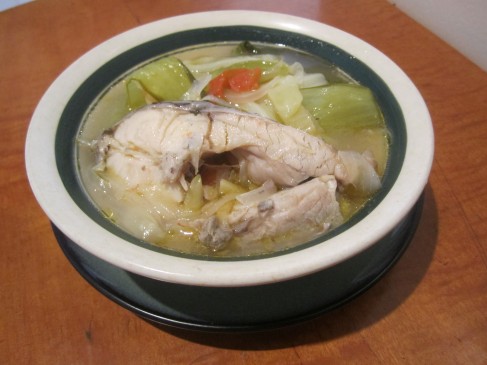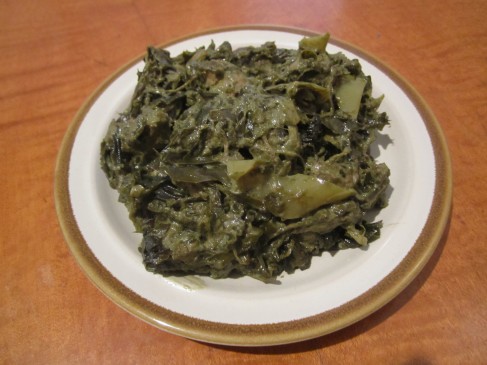It was such a big surprise when my aunt dropped by and brought me some delicious Filipino food! My aunt is from Bicol (Luzon island) where the famous Mayon Volcano is. Most of the dishes I grew up with are from Bulacan and Cavite provinces which is also known as Tagalog dishes.
We compare notes when it comes to ingredients of similar dish. When I hear the word sinigang, the first thing that will come to my mind is the soup with sour broth. We use tamarind or citrus to make it sour. Also I will expect to see string beans, radish, okra, kangkong (like spinach) and green chili pepper.
My aunt’s Bicol version has different vegetables. I will ask her for the recipe when she comes back. But as to what I see in the dish she brought me, it has eggplant, bakchoy leaves, cabbage, onions, ginger and tamarind powder. Tamarind is seasonal, so when the season comes, I make sure I get them because I like using real tamarind to make sinigang.
Sinigang na Tilapia (Tilapia fish in sour broth)
I like laing but it seems like only few can make a good one. Well, I guess you know that my aunt’s is one of them. Most laing I had in the past cause the tongue to itch. Taro leaves are poisonous when it’s eaten raw. It should be dried under the heat of sun before cooking.
Recipe will follow after I asked my aunt. For now, please enjoy the picture. Laing are taro leaves and they are cooked by boiling with coconut milk, and some will add green spicy chili pepper. I’m not a fan of spicy laing. But I think it’s because I haven’t had one that is balanced not just spicy. I want to taste the main ingredient which is the taro leaves.
Ginataang Laing (Taro leaves in Coconut Milk)

Mayon Volcano in Albay, Bicol Region. Philippines.
The two dishes I featured above are native from Bicol region which is known for the Mayon Volcano.
The Mayon Volcano also known as Mount Mayon, is an active strato-volcano in the province of Albay, Bicol Region, in the island of Luzon, Philippines. Known as the perfect cone due to its almost symmetrically conical shape, the volcano forms the northern boundary of Legazpi City.

